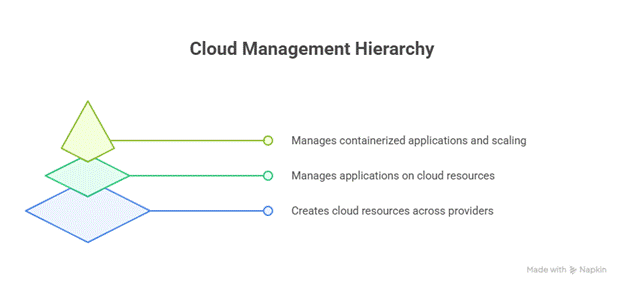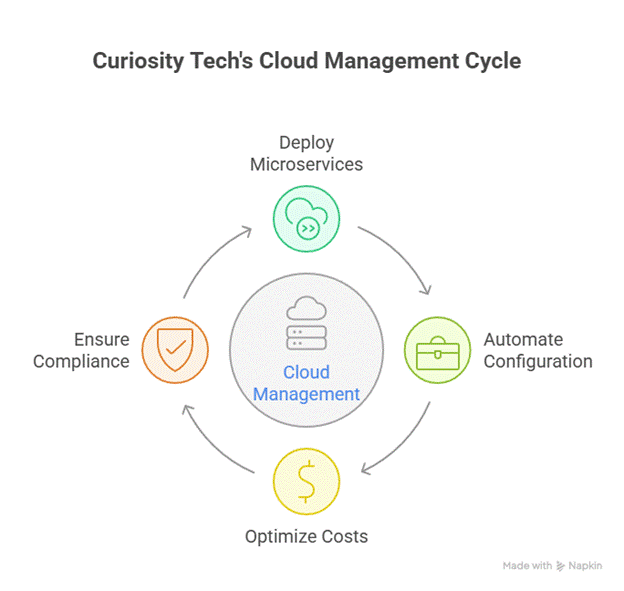In today’s fast-paced digital landscape, managing workloads across multiple cloud environments is no longer optional—it’s essential. Organizations are increasingly adopting multi-cloud strategies to leverage the unique strengths of cloud providers like AWS, Azure, and Google Cloud. While this approach brings flexibility, it also introduces complexity. Enter multi-cloud management tools: the secret sauce for consistent, automated, and scalable operations. In this article, we’ll dive deep into Terraform, Ansible, and Kubernetes, exploring how they simplify multi-cloud management and help businesses innovate faster.
Why Multi-Cloud Management Matters

Terraform – Infrastructure as Code (IaC)

Ansible – Automation for Configuration Management
While Terraform excels in provisioning, Ansible shines in configuration management and application deployment. Ansible uses playbooks (written in YAML) to automate repetitive tasks across servers, regardless of their cloud provider.
Why Ansible Matters for Multi-Cloud:
- Agentless: No installation needed on target machines; uses SSH.
- Idempotent: Running a playbook multiple times yields the same results, preventing inconsistencies.
- Scalable: Manages hundreds or thousands of servers effortlessly.
- Integration: Works well alongside Terraform to provision and configure infrastructure in tandem.
Example Workflow:
- Provision resources with Terraform across AWS, Azure, or GCP.
- Configure servers with Ansible playbooks (installing packages, setting up databases, or deploying apps).
- Maintain environments consistently across multiple clouds.
Kubernetes – Orchestrating Multi-Cloud Containers
Kubernetes (K8s) is the go-to container orchestration platform. In a multi-cloud context, it allows teams to deploy containerized applications consistently across different cloud providers without worrying about the underlying infrastructure.
Key Advantages:
- Portability: Run containers on any cloud without modification.
- Scalability: Auto-scale applications based on demand.
- Self-Healing: Restarts failed containers and maintains desired states.
- Service Discovery & Load Balancing: Ensures high availability and reliability.
Kubernetes combined with Terraform and Ansible creates a robust ecosystem for multi-cloud management: Terraform provisions the infrastructure, Ansible configures it, and Kubernetes orchestrates applications for seamless deployment and scaling.
Multi-Cloud Management Hierarchy

Real-World Example

Best Practices for Multi-Cloud Management
- Adopt IaC Early: Treat infrastructure as code from day one for consistency.
- Combine Tools Effectively: Use Terraform for provisioning, Ansible for configuration, Kubernetes for orchestration.
- Version Everything: Keep configurations, playbooks, and Kubernetes manifests under version control.
- Monitor Continuously: Use monitoring tools to track performance and resource utilization across clouds.
- Secure by Design: Implement policies and encryption uniformly across providers.
Conclusion
Managing multi-cloud environments may seem daunting, but the right tools make it manageable and scalable. Terraform, Ansible, and Kubernetes together provide a powerful framework for automation, configuration management, and orchestration. Companies like Curiosity Tech exemplify how a structured multi-cloud strategy can accelerate innovation, reduce errors, and improve operational efficiency. By embracing these tools, businesses are no longer limited by infrastructure complexity—they gain the freedom to innovate at cloud speed.



